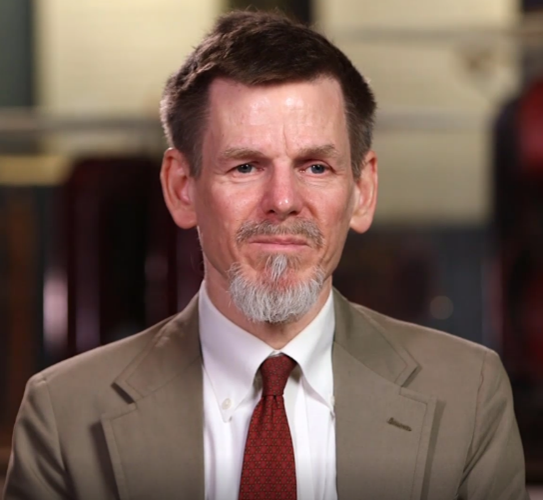Roger Sherman
The National Technology Leadership Summit (NTLS) Educational Technology Leadership Award recognizes individuals who made a significant impact on the field of educational technology over the course of a lifetime. The NTLS consortium is a coalition of twelve national teacher education associations that collaborate to advance effective use of technology in schools. The NTLS Educational Technology Leadership Award is the coalition’s highest honor. The 2022 NTLS award recognizes Roger Sherman for his contributions to these efforts.

Like many others described by Sherry Turkle in A Passion for Objects (2008), Roger Sherman developed an interest in mechanisms, tools, and science in general at an early age. At Yale College he was attracted to the history of scientific instruments, and graduated with a bachelor’s degree in history of science. His senior project focused on identifying and interpreting antique instruments in Yale’s collection. He continued this work through an appointment as a Museum Technician at what was then called the National Museum of History and Technology (now the National Museum of American History) at the Smithsonian Institution. He worked in the Division of Physical Sciences, investigating the rich collection of optical instruments. He then became an assistant to the Curator for Modern Physics. He cared for the large exhibition on “Atom Smashers,” educating himself in a new field of science history in the process. He developed exhibits on Charles Came, a nineteenth century traveling science showman, and on the 100th Anniversary of the National Bureau of Standards (now the National Institute of Standards and Technology). He worked with the Museum’s Hands-On Science Center, developing activities that replicated the electrical experiments of Benjamin Franklin and the work of Joseph Henry in designing the first powerful electromagnets. Since 2012 he has been the sole curator in charge of the Museum’s Modern Physics collection, maintaining an interest in earlier periods of physics and other sciences, as well as collaborations with external organizations.
It was in this context that he joined the American Innovations in an Age of Discovery initiative. This NTLS project, undertaken with support from the National Science Foundation (NSF #1513018), made use of emerging makerspace technologies to enable students to reconstruct working models of transformational inventions in the collections of the Museum.
In the nineteenth and twentieth centuries, a series of inventions revolutionized life in this country. By the end of the nineteenth century, we were starting to innovate in a very significant way. There was a feeling that this was a new country. Our governmental system was a new one. We were open to new ideas. Invention work was supported and encouraged. The mission of the American Innovations in an Age of Discovery initiative is to foster this sense of support for creativity, imagination, and innovation that has been a characteristic of American technology and invention. Invention Kits enabling students to reconstruct historic inventions provide students with a new way of approaching learning.
Roger Sherman 2017
The inventions reconstructed through this initiative now form the core of an open-source Educational CAD Model Repository. The International Technology and Engineering Education Association (ITEEA) is revising its flagship curriculum, Engineering by Design, to create an ecosystem constructed around the repository of CAD models. By this means, thousands of teachers and students using the curriculum will engage with the models integrated as a key element of the revised curriculum. In addition, the Fab Foundation, established through the Center for Atoms and Bits at MIT, is working in collaboration with the eduFAB Foundation to engage a network of Fabrication Laboratories (FabLabs) in this process.
The mission of the National Museum of American History is to give people an understanding of the past so that they can function effectively in the present and develop a better future. Roger Sherman’s work continues and extends that tradition.
